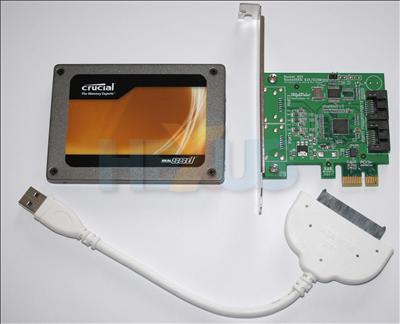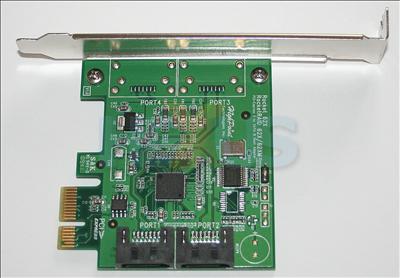Micron claimed impressive sequential-throughput speeds of 355MB/s write and 215MB/s read, so we decided to put the numbers to the test. A Crucial-branded C300 was delivered to our office this morning, and it would have been unfair to leave it on the shelf for long.
The package includes the 256GB drive, SATA-to-USB adapter, cables (not shown) and a Highpoint RocketRAID 620 SATA controller that provides both SATA 6Gbps (revision 3.0) and RAID 0,1 ,5, 10, JBOD support.
Based on the PCIe Gen 2 protocol with a x1 interface, the card has a theoretical 500MB/s of bandwidth in each direction, ensuring that the Crucial C300 isn't stifled by the limitations imposed by omnipotent SATA 3Gbps, where the bandwidth ceiling is a usable 270MB/s or so - well under the drive's purported read speed.
Premium motherboards in 2010 will ship with integrated support for SATA 6Gbps and USB 3.0 - ASUS, MSI, and Gigabyte leading the way - but the majority of installed boards still feature the slower standard.
Run on an ASUS P6T SE via the southbridge's SATA 3Gbps port and then through the RocketRAID controller, CrystalDiskMark 2.2 provides a high-level idea on probable performance. First off, as a yardstick, is the result from a speedy Kingston SSDNow V+ 128GB drive.
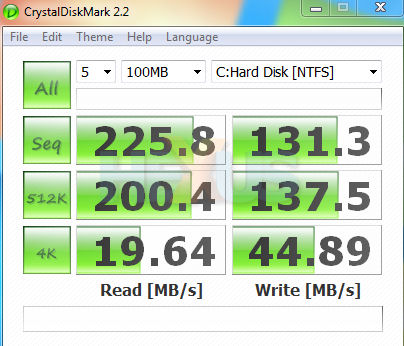
The performance is indicative of a decent SSD's, and the Kingston drive is sharp with respect to 4K reads and writes.
Here's the same test with the Crucial RealSSD C300 also attached to the ICH10R's SATA 3Gbps port.
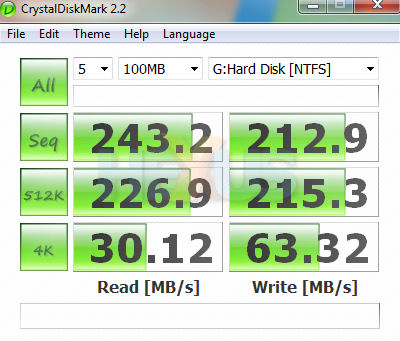
The drive is faster in every respect, especially when writing data and moving small-sized files around. But they're not quite the blazing speeds espoused by Micron, right?
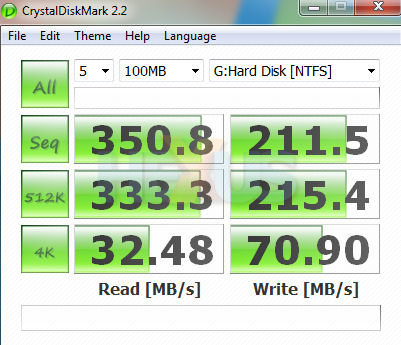
The same test but with the drive now connected via the RocketRAID controller, letting the C300 strut its stuff.
Interface-limited read performance goes up by a healthy degree, now no longer held back by the SATA 3Gbps protocol.
The RealSSD C300 is the fastest solid-state drive that we've come across, and we'll be conducting an in-depth test shortly. The 256GB will likely retail for well over £500, probably closer to £750, thereby putting it out of the reach for most, but it does give us an idea on what to expect from mid-priced solutions later on in the year.
Stay tuned for the full review if the numbers have whetted your appetite.



